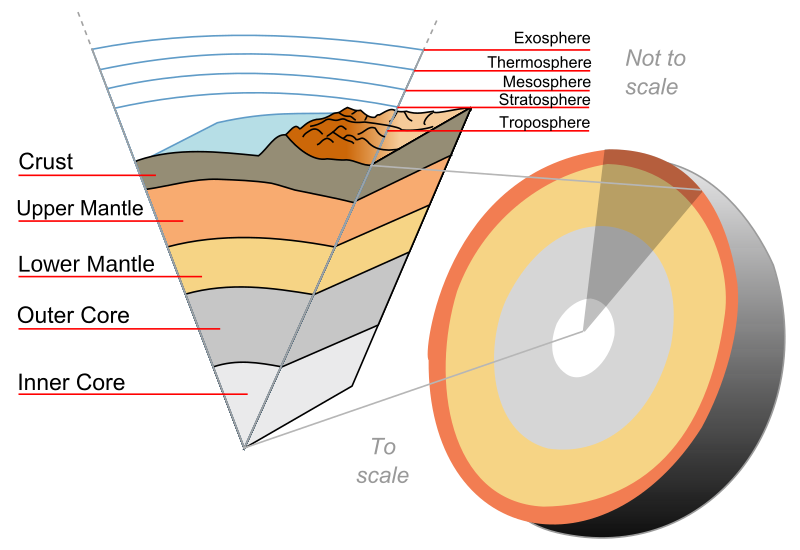By observing distant earthquakes, researchers at the University of Calgary have revealed new clues about the interior of our planet. They say they have discovered that the composition of Earth's outer core is much different than scientists previously believed.
The results appear in Physics of the Earth and Planetary Interiors
Previous studies have suggested that there is a distinct layer of light material at the top of Earth's core, but new study suggests this is not the case. "Some scientists have proposed a region of sediment accumulation at the top of the core, or even distinct liquid layers, but this study shows that the outer core is, in fact, well mixed," says professor Dave Eaton, co-author of the paper. "This inaccessible region is composed of molten iron, nickel and other as-yet unknown lighter elements such as silicon, sulfur, carbon or oxygen

(photo credit: wikipedia)
Using a novel digital processing approach, researchers analyzed faint signals, produced by 44 earthquakes, and were able to measure the sound speed at the top of Earth's core with unprecedented accuracy.
The method is based on 'listening' to earthquakes on the other side of the planet using an approach that is akin to hearing a conversation across a whispering gallery, such as those in the domes of some large cathedrals.
"Observation of distant earthquakes is one of the few tools that scientists have to investigate deep parts of the Earth," says co-author Catrina Alexandrakis from the University of Calgary. "This isn't the first time earthquake data has been used, but our research method is the most definitive to date."
The effort to measure the seismic wave speed at the top of Earth's core will help scientists unravel the source of the Earth's magnetic field and the formation of our planet, the researchers say.
Citation: Catherine Alexandrakis, David W. Eaton', Precise seismic-wave velocity atop Earth's core: No evidence for outer-core stratification ', Physics of the Earth and Planetary Interiors, March 2010; doi:10.1016/j.pepi.2010.02.011


